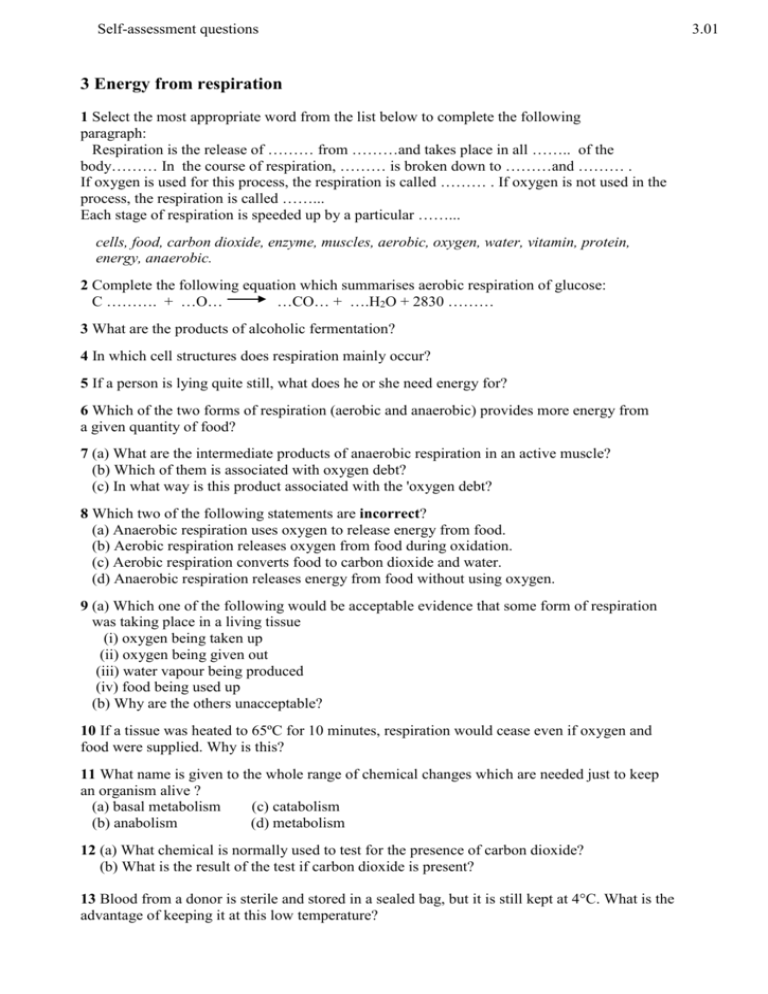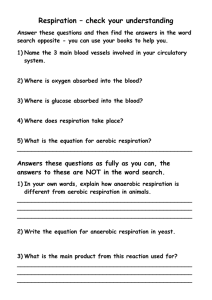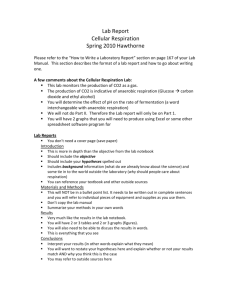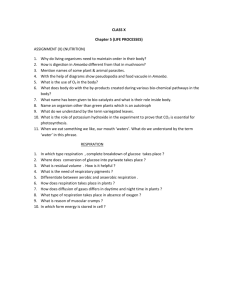Energy from respiration
advertisement

Self-assessment questions 3 Energy from respiration 1 Select the most appropriate word from the list below to complete the following paragraph: Respiration is the release of ……… from ………and takes place in all …….. of the body……… In the course of respiration, ……… is broken down to ………and ……… . If oxygen is used for this process, the respiration is called ……… . If oxygen is not used in the process, the respiration is called ……... Each stage of respiration is speeded up by a particular ……... cells, food, carbon dioxide, enzyme, muscles, aerobic, oxygen, water, vitamin, protein, energy, anaerobic. 2 Complete the following equation which summarises aerobic respiration of glucose: C ………. + …O… …CO… + ….H2O + 2830 ……… 3 What are the products of alcoholic fermentation? 4 In which cell structures does respiration mainly occur? 5 If a person is lying quite still, what does he or she need energy for? 6 Which of the two forms of respiration (aerobic and anaerobic) provides more energy from a given quantity of food? 7 (a) What are the intermediate products of anaerobic respiration in an active muscle? (b) Which of them is associated with oxygen debt? (c) In what way is this product associated with the 'oxygen debt? 8 Which two of the following statements are incorrect? (a) Anaerobic respiration uses oxygen to release energy from food. (b) Aerobic respiration releases oxygen from food during oxidation. (c) Aerobic respiration converts food to carbon dioxide and water. (d) Anaerobic respiration releases energy from food without using oxygen. 9 (a) Which one of the following would be acceptable evidence that some form of respiration was taking place in a living tissue (i) oxygen being taken up (ii) oxygen being given out (iii) water vapour being produced (iv) food being used up (b) Why are the others unacceptable? 10 If a tissue was heated to 65ºC for 10 minutes, respiration would cease even if oxygen and food were supplied. Why is this? 11 What name is given to the whole range of chemical changes which are needed just to keep an organism alive ? (a) basal metabolism (c) catabolism (b) anabolism (d) metabolism 12 (a) What chemical is normally used to test for the presence of carbon dioxide? (b) What is the result of the test if carbon dioxide is present? 13 Blood from a donor is sterile and stored in a sealed bag, but it is still kept at 4°C. What is the advantage of keeping it at this low temperature? 3.01








